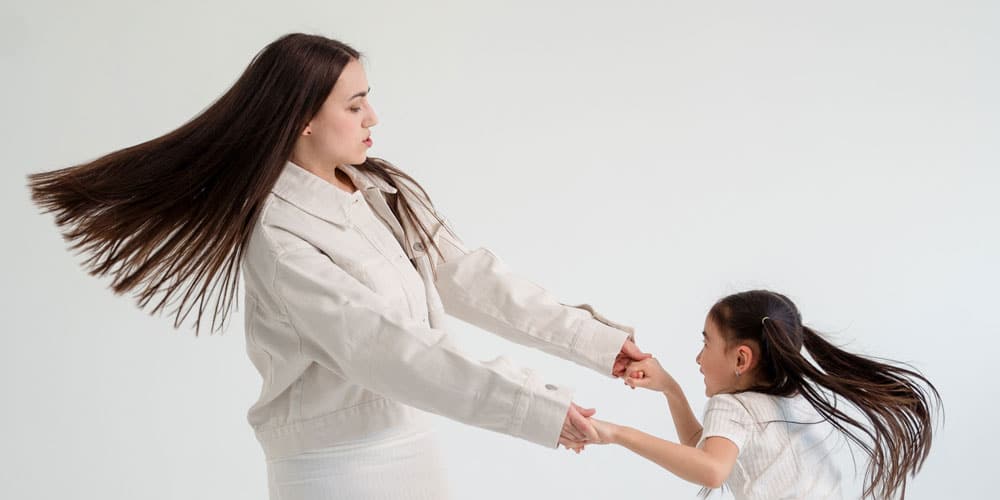HOW DOES IT WORK?
Chemical + thermo-mechanical action
It is said to be revolutionary... However, Japanese straightening uses the same basic active ingredients as a thiolate straightening i.e. a mixture (thiol + ammonia) with the property of being able to reduce sulphur molecules. This mixture breaks 30% of the strong bonds of the keratin which are then reconstructed with an oxidising fixative.
So, from a chemical point of view, there's nothing very new. The only difference between Japanese straightening and thiolol straightening is the method used and the use of hot plates.
Few hairdressing salons offer this operation, which is time-consuming, tricky to perform, reserved for too small a clientele (see hair types below) and ultimately not very profitable, despite the prices charged.
Keratin manipulation to straighten hair
It is from the most intimate structure of keratin, that of the protofibrils, that we can change the colour or natural shape of a hair to dye it, curl it or, on the contrary, stiffen it and make it completely straight. For Japanese straightening the disulphide bridges need to be broken. This is far from a trivial operation, as it involves destroying the keratin's initial structure and imposing a new, lighter, permanently stiff one. The hair loses its strength and becomes more vulnerable to breakage.

MAIN INGREDIENTS
For the reducing agent
- Thioglycolic acid
- Ammonia
- Several different silicones
For the fixing product
- Hydrogen peroxide
- Several different silicones
HAIR TYPES
It can only be used on perfectly healthy natural Asian or Caucasian hair.
It is not recommended for hair that is damaged or already treated (coloured, highlighted, straightened, permed, etc.).
APPLICATION
Application methods may vary slightly from one product to another.
- Clarifying" shampoo (in fact a stripper), to remove all impurities: silicones, dust, sebum, gel, spray...)
- Smoothing blow-dry with a blow-dryer + brush, or with a blow-dryer.
- Apply the thiol product with a brush, 1 cm strand by 1 cm strand, without touching the scalp.
Each wick is wrapped in paper to prevent the product from evaporating. - Application of heating plates at 240° maximum.
- Timer-controlled pause time - between 15 and 25 minutes maximum, depending on hair thickness
- Rinse, then apply a protective collagen cream to wet hair.
- Blow-dry to relax the hair + application of hot plates at 240° maximum.
- Application of the oxidizing hairspray on dry hair.
- Timer-controlled pause time.
- Rinse thoroughly and blow-dry naturally, without blow-drying.
Then, as with the Brazilian straightening the hair should not be wet or tied up, or even styled behind the ears, for a few days while it settles into its new shape.
Application time: 4 to 8 hours, depending on the density and length of the hair.
RESULTS
The stick effect is guaranteed. It's important that this effect looks good and pleases the customer, because no subsequent manipulation is possible: it's impossible to re-curl, dye or style the hair after a Japanese straightening. The only possibility is to follow up with a Brazilian straightening if you want the hair to shine even more.
LIFETIME
Japanese straightening is permanent. However, it is essential to re-grow the hair every 6 or 8 months to avoid the "mottled mattress" appearance of drum sticks.
OPINION CLAUDERER
It is often called "hair surgery". It's not a misnomer: it's a surgical operation that keratin undergoes, since in order to straighten it, it must first be destroyed. However, as thiol is a less aggressive product than the soda or guanadine used in alkaline straightening, the hair will tend to break less. It will still come out thirsty for hydration, and "post-operative" treatments will be necessary for the long term, to try to nourish it permanently.

